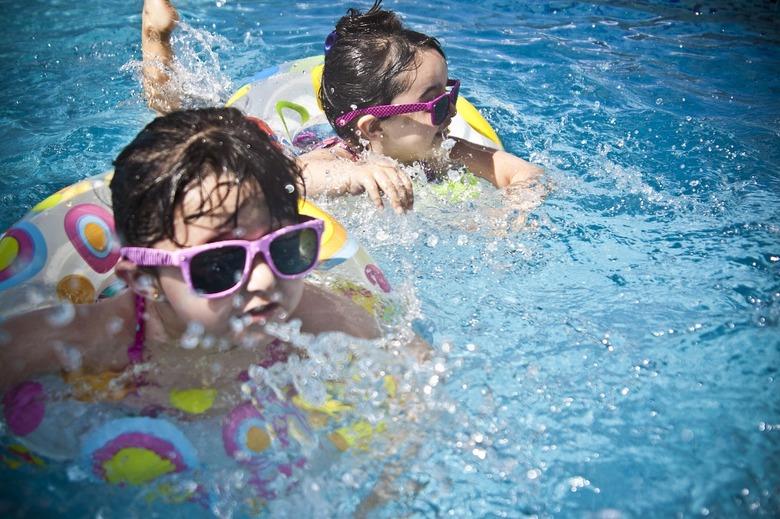Can I Put An Above-Ground Swimming Pool On A Concrete Slab?
If you don't have the budget or space for a built-in pool, an above-ground model is a great alternative. Homeowners who choose to install one of these pools often set it directly on the ground, but it's a better idea to place it on a concrete pad. A properly constructed pad is reliably flat and level. Also, a concrete pad keeps the base of the pool above the ground, thus preventing deterioration from moisture and mold. The pad must conform to a few requirements, but they are common-sense criteria that apply to most concrete installations.
The Pad Must Be Flat and Level
When installing an above-ground pool, it's essential to level the ground where you intend to place it. According to one installer, a difference of more than 1 inch from one side of the pool to the other is noticeable. It may result in significant amounts of water being sloshed out of the pool. A difference of more than 3 inches is not acceptable and will probably result in pool damage in short order.
It's actually easier to construct a level concrete pad than it is to level bare ground. Because it's a liquid, fresh concrete will level itself on a base that may not be level. Also by virtue of its liquidity, fresh concrete naturally flattens itself, eliminating the possibility of liner-puncturing protrusions, such as tree roots.
A Concrete Pad Is Strong
Concrete slabs vary from 4 to 8 inches thick. Even a low-strength, 4-inch concrete slab can withstand a weight of 1,700 kilograms per square centimeter, or 24,123 pounds per square inch. This is more than strong enough to support an 18-foot by 4-foot-deep round pool. Such a pool contains about 30,000 gallons, and that amount of water weighs about 125 tons, exerting a pressure on the slab equal to about 4 pounds per square inch. There is little danger that the pool will crack or deform the slab.
A Pad Protects the Pool from Rain and Snowmelt
It may seem paradoxical that a pool filled with water would need protection from water, but it does, especially around the base. When the pool is set directly in the ground, water runoff and snowmelt naturally seep underneath it, and the weight of the water in the pool creates a protected environment under the pool for mold to grow. Beside creating unsanitary conditions for kids playing around the pool, mold can degrade the vinyl liner.
When you set the pool on a pad, rainwater and snowmelt can drain off the concrete rather than going under the pool. Moreover, water flowing naturally in the yard will flow around the pad rather than under the pool. This eliminates the possibility of soil erosion under the pool throwing it off-level.
Two Things to Consider
Pool Modifications: Many hard-sided above-ground pools need buttresses to support their sides, but soft-sided bladder types don't. If your above-ground pool requires buttresses to strengthen its sides, the buttresses will typically require modification for duty on a concrete slab.
Cushioning: You'll probably want an underlayment to provide cushioning between the base of the pool and the concrete pad. This protects the liner from friction wear, and it makes the base softer for your feet. Foam-board insulation is one material appropriate for this purpose.
Foam-board insulation is generally made of polystyrene or polyurethane. It is widely available and is easy to cut and form. It comes in several thicknesses, but you don't need it to be thicker than 1/2 to 1 inch.
